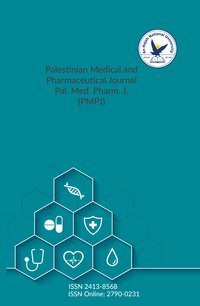Dexmedetomidine as an Adjuvant to Local Anesthesia in Supraclavicular Brachial Plexus Block: A Randomized Controlled Trial
Authors:
Article info
2024-05-15
2024-07-28
2024-08-16
None - None
Keywords
- Motor Block
- Sensory Block
- Supraclavicular Brachial Plexus Block
- Dexmedetomidine
- Bupivacaine
- Analgesia
Abstract
Purpose: This research aims to examine the effects of dexmedetomidine on the analgesia, duration of the sensory and motor blocks, and hemodynamics in the supraclavicular brachial plexus block when used in conjunction with local anesthetic Bupicavine in a group of patients having surgeries on their upper limbs. Methodology: A randomized control trial was conducted at An-Najah National University Hospital. A control group received bupivacaine alone, and an intervention group received bupivacaine and dexmedetomidine. Patients were monitored for sensory and motor blocks, heart rate, and blood pressure intraoperatively. In addition, they were evaluated for pain, somnolence, nausea, heart rate, and blood pressure postoperatively. Results: The study included 112 participants: 56 in the intervention group and 56 in the control group. The intervention group, which received dexmedetomidine in addition to bupivacaine, demonstrated significantly accelerated onset of sensory and motor blocks, prolonged duration of these blocks, and extended duration of analgesia compared to the control group. Specifically, the median duration of analgesia was significantly longer in the intervention group (337.50 ± 314.17 - 408) compared to the control group (188.75 ± 145 – 241.67). Additionally, dexmedetomidine was associated with a significant reduction in the median systolic blood pressure of 145.66 ± (135.88 - 153.67) compared to the systolic blood pressure in the control group of 151.08 ± (147.27 ± 156.24), and the diastolic blood pressure showed significantly lower median values in the dexmedetomidine group compared to the control group with a p-value of >.001. The heart rate readings did not show a statistically significant increase in the intervention group compared to the control group. Although the control group had significantly higher systolic and diastolic blood pressure readings compared to the intervention group, there was no significant difference between each of those groups intraoperatively or postoperatively. Conclusion: Dexmedetomidine enhances anesthesia and analgesia without compromising hemodynamics. Adding dexmedetomidine to bupivacaine increased analgesia, expedited onset, and extended sensory and motor blocks. Dexmedetomidine reduced heart rate and blood pressure during and after surgery. It decreased postoperative nausea. More research is needed to completely understand the clinical potential of dexmedetomidine.
Dexmedetomidine as an Adjuvant to Local Anesthesia in Supraclavicular Brachial Plexus Block: A Randomized Controlled Trial
المؤلفون:
معلومات المقال
2024-05-15
2024-07-28
2024-08-16
None - None
الكلمات الإفتتاحية
- Motor Block
- Sensory Block
- Supraclavicular Brachial Plexus Block
- Dexmedetomidine
- Bupivacaine
- Analgesia
الملخص
Purpose: This research aims to examine the effects of dexmedetomidine on the analgesia, duration of the sensory and motor blocks, and hemodynamics in the supraclavicular brachial plexus block when used in conjunction with local anesthetic Bupicavine in a group of patients having surgeries on their upper limbs. Methodology: A randomized control trial was conducted at An-Najah National University Hospital. A control group received bupivacaine alone, and an intervention group received bupivacaine and dexmedetomidine. Patients were monitored for sensory and motor blocks, heart rate, and blood pressure intraoperatively. In addition, they were evaluated for pain, somnolence, nausea, heart rate, and blood pressure postoperatively. Results: The study included 112 participants: 56 in the intervention group and 56 in the control group. The intervention group, which received dexmedetomidine in addition to bupivacaine, demonstrated significantly accelerated onset of sensory and motor blocks, prolonged duration of these blocks, and extended duration of analgesia compared to the control group. Specifically, the median duration of analgesia was significantly longer in the intervention group (337.50 ± 314.17 - 408) compared to the control group (188.75 ± 145 – 241.67). Additionally, dexmedetomidine was associated with a significant reduction in the median systolic blood pressure of 145.66 ± (135.88 - 153.67) compared to the systolic blood pressure in the control group of 151.08 ± (147.27 ± 156.24), and the diastolic blood pressure showed significantly lower median values in the dexmedetomidine group compared to the control group with a p-value of >.001. The heart rate readings did not show a statistically significant increase in the intervention group compared to the control group. Although the control group had significantly higher systolic and diastolic blood pressure readings compared to the intervention group, there was no significant difference between each of those groups intraoperatively or postoperatively. Conclusion: Dexmedetomidine enhances anesthesia and analgesia without compromising hemodynamics. Adding dexmedetomidine to bupivacaine increased analgesia, expedited onset, and extended sensory and motor blocks. Dexmedetomidine reduced heart rate and blood pressure during and after surgery. It decreased postoperative nausea. More research is needed to completely understand the clinical potential of dexmedetomidine.
Since 2022
Cite Score (Scopus): 0.8
Time to First Decision: 3 Days
Submission to Acceptance: 45 Days
Acceptance to Publication: 64 Days
Acceptance Rate: 17%
Why should you
Publish With Us?
An-Najah National University
Nablus, Palestine
Nablus, Palestine
- P.O. Box
- 7, 707
- Fax
- (970)(9)2345982
- Tel.
- (970)(9)2345560
- (970)(9)2345113/5/6/7-Ext. 2628
- [email protected]
- EIC
- Prof. Waleed Sweileh
The Palestinian Medical and Pharmaceutical Journal (Pal. Med. Pharm. J.) © 2024 by An-Najah University, Nablus, Palestine is licensed under CC BY-NC 4.0
News and Views
